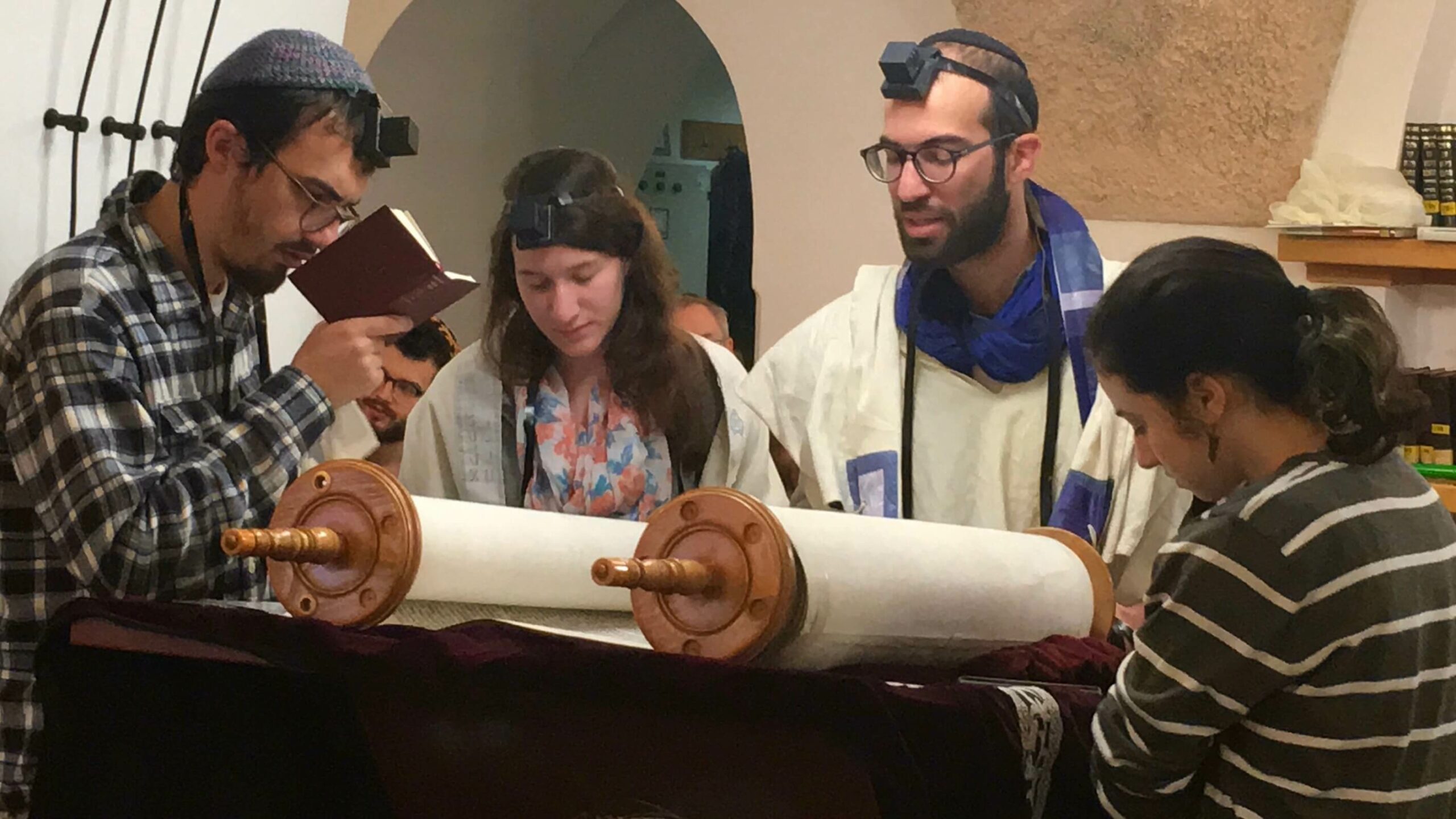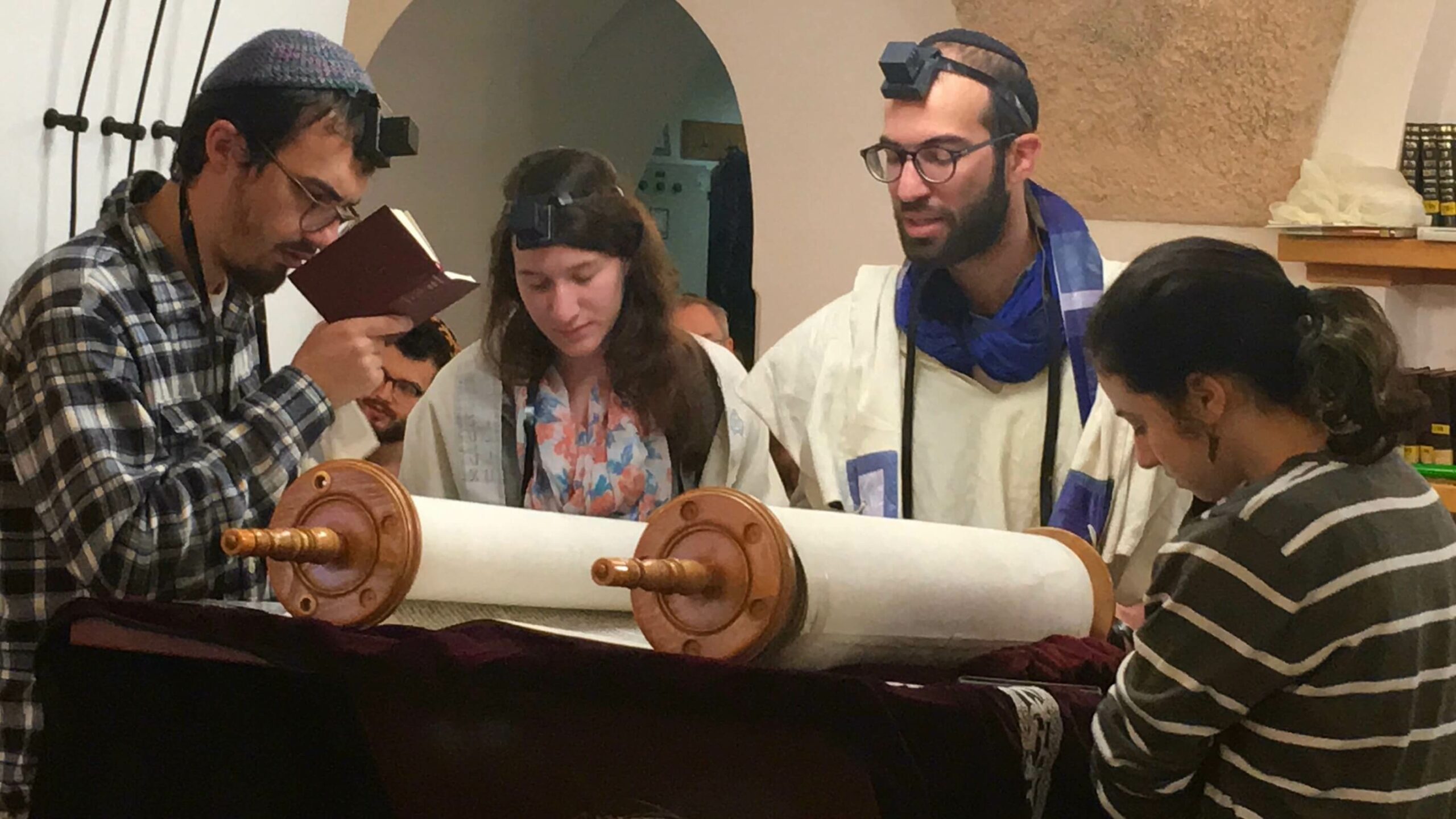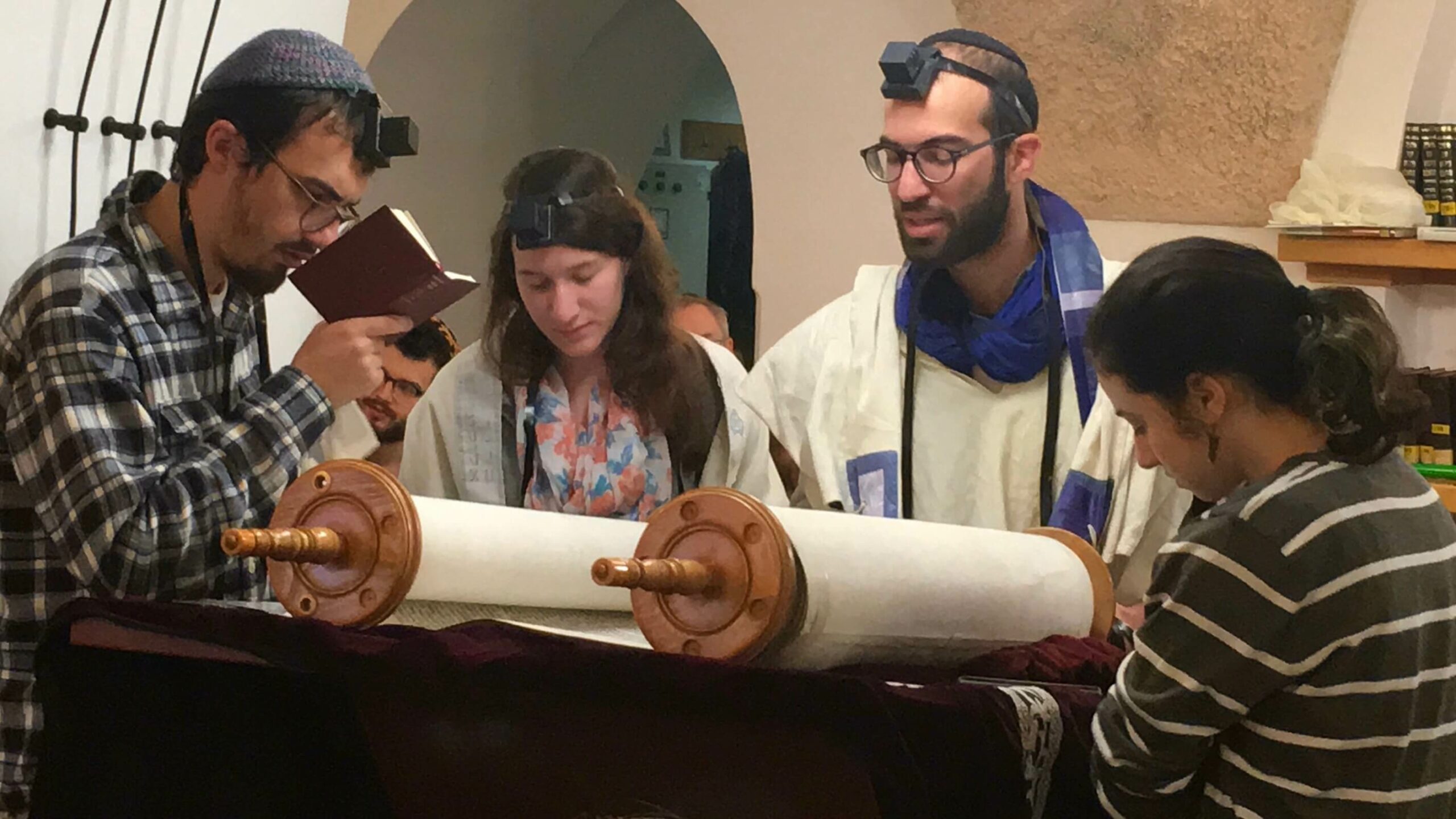

TORAH SPARKS (print friendly version)
Parashat Terumah February 29, 2020 | 4 Adar 5780
Annual | Exodus 25:1-27:19 (Etz Hayim p. 485-498; Hertz p. 325-336)
Triennial | Exodus 25:1-25:40 (Etz Hayim p. 485-491; Hertz p. 325-330) Haftarah | 1 Kings 5:26-6:13 (Etz Hayim p. 499-502; Hertz p. 336-338)
D’var Torah: Experiencing the Mishkan
Dr. Devorah Schoenfeld, Conservative Yeshiva Alumna and Professor of Theology at Loyola University in Chicago, IL
There are many science-fiction novels, set in the far or not-so-far future, in which characters encounter a relic of the present. Walking in the ruins of what once had been a great city they might find a flat box with a screen, or a small metal and glass device. It is clear to these far-future characters that these strange items were once important, once treasured by their owners, but why? What did they mean?
Reading Parashat Terumah can feel like a similar experience. The utensils of the Tabernacle (Mishkan), so precisely and specifically measured, meant so much to our ancestors that they described them not once but twice, here and in Parashat Vayakhel. These utensils must have helped them connect to God in some essential and life-giving way. But it has been many centuries since my ancestors stood in the structure that housed these utensils, and all we have is their descriptions. How can we know what they meant?
We find two ways of imagining how the Mishkan was built, one which imagines it as entirely miraculous and one that describes it as down to earth. One place these two possibilities are placed side by side is in a debate in Midrash Tanchuma Terumah 9.14 between R. Judah and R. Nehemiah about the tachash of Exodus 25:3. According to R. Nehemiah, this tachash (‘seal’) was a strange and wondrous animal whose very existence was a miracle and it was created only for that moment. And not only the tachash was miraculous but so were other components of the Mishkan, including even the wood, which came from trees planted by Jacob because he knew by prophecy that the Mishkan would be built from them.
If we imagine the Mishkan as a place of miracles, built of strange animals and prophesied wood, then we imagine the experience of being in the Mishkan as one of encountering God through miracles. It would be a place that could help one encounter God through its strangeness, through its completely unique materials that show the work that God did to help us create this particular space.
Or we could imagine the building of the Mishkan as much more down to earth. To R. Judah, the tachash was simply a desert animal. In Midrash Tanchuma Terumah 5.1 it states that the gifts used to build the Mishkan were spoils taken from the Egyptians at the Red Sea. These spoils were a kind of compensation for the work that the Israelites were forced to do as slaves. Imagined this way, the Mishkan is a product of human effort, and the experience of being in the Mishkan could have been one of awareness of human effort and historical experience.
And perhaps, Midrash Tanchuma suggests, the two are not opposed. Midrash Tanchuma Terumah 9.5-6 describes at length the wonders of God’s heavens, and concludes with “Yet see how much I love you that I leave all of this because of my love for you to tell you: And thou shalt make curtains of goats’ hair for a tent (Exodus 26:7).” The Mishkan was, in this reading, a place to remember God’s wonders and miracles and also God’s choice to dwell with us in a goats-hair tent.
Looking back, the experience of what it could have been like to worship in the Mishkan can feel difficult to imagine. Would it feel like being surrounded by God’s miracles? Or did it feel concrete and physical, a place where what surrounded us is nothing other than the fruits of our own labor?
The distance between us and the Mishkan can be humbling because it reminds us that there is so much about the experience of being Jewish and loving God that can feel distant from our own experiences. This parashah and its interpreters allow us to enter imaginatively into the world of those for whom the Mishkan was the place where God lived and begin to imagine how that might have felt.
Parashah Study: A Heavenly Design
Vered Hollander-Goldfarb, Conservative Yeshiva Faculty
We are entering 5 Parashot (over 4 weeks) that are mostly devoted to the Mishkan – first the instructions, and then, in the last two parashot, the construction.
Text: Shemot 25:2-26:1 (2) Tell the Israelites to make Me a donation… (8) And let them make Me a sanctuary that I may dwell among them. (10) They shall make an ark of acacia wood…(17) You shall make a cover of pure gold… (21) Place the cover on top of the Ark, after depositing inside the Ark the Pact that I will give you… (23) and you shall make a table of acacia wood… (31) and you shall make a lampstand of pure gold… 26(1) As for the Tabernacle, make it of ten strips of cloth…
- Looking at the furnishings of the Mishkan, what do we learn about what furniture one could have expected in a house in biblical times? What piece of regular furniture might the Ark have been the equivalent of? What furnishings would you add today?
- Why do the furnishings of the Mishkan appear in this order?
Commentary: Ramban introduction to the Parashot about the Mishkan
When the LORD spoke to the people of Israel… and He said “you shall be to Me a kingdom of priests and a holy nation” (19:6). So now that they are holy it is appropriate that there will be in their midst a Mikdash [holy place], so He began by commanding them about the Mishkan… from where He will speak with Moshe and command the children of Israel. The main purpose for the Mishkan is as a place where God’s presence rests, which is the Aron (ark) as it says (25:22) “there I will meet with you and I will impart to you from above the cover” therefore He began with the Aron (Ark) and the Kaporet (cover) for they are of the primary level; and adjacent to the Aron He [instructs about] the table and the lamp for they are vessels like it, and will demonstrate the purpose for which it was made. But in Parashat Vayakhel Moshe began with the Mishkan, its tent and its cover (35:11) and so did Betzalel do, for it is appropriate to make it first.
- Why are these Parashot located at this point of the Torah narrative?
- Ramban is giving us an overview of the internal order of these Parashot. What is the logic in the order, and why do the instructions differ in order from their execution?
- In what order do you give instructions? Why?
D’var Haftarah: The Miraculous & The Ordinary
Rabbi Mordechai Silverstein, Conservative Yeshiva Faculty
King Solomon was responsible for building the First Temple. Much of this week’s haftarah focuses on the acquisition of materials and the work involved in bringing the building of the Temple to fruition. One verse of this description, in particular, caught the attention of the Sages: “And the House when it was built, of whole stones at the quarry it was built, and no hammers nor axes nor any iron tools were heard in the House when it was built.” (6:7)
How could it be possible to build a monumental building, even a sacred building, without the din of building tools clattering and clashing one with another? Two sages from the period of the Mishnah take to trying to explain this phenomenon: “Rabbi Yudah said: What is the nature of the Shamir (a miraculous worm)? It is a creature from the six days of creation. When it was put on stones or on boards, they would open up before it like the leaves of a notebook. And that is not all, for when it was put on iron, the iron would burst open and fall apart before it. And nothing can stand before it… And with it, Solomon built the Temple. As it said: ‘and no hammers nor axes nor any iron tools were heard in the House when it was built.’ These are the words of Rabbi Yehudah. Rabbi Nehemiah said: ‘They sawed with a saw outside, as it said: ‘all these were of costly stones… sawed with saws in the House and outside.’ (7:9) Why does Scripture say: ‘inside the house and outside’? Inside the House they were not heard, because they were prepared outside and brought inside. Said Rabbi: The opinion of Rabbi Yehudah seems preferable to me regarding the stones of the Temple and the opinion of Rabbi Nehemiah regarding Solomon’s house.” (Tosefta Sotah 15:1, Lieberman ed. pp. 238-9)
We are faced with two radically different explanations of this verse, one miraculous and one perfectly ordinary. The ordinary explanation requires no explanation. It is perfectly natural and rational. The story of the “Shamir”, a mythical worm, requires the eyes of a poet for understanding. It is nothing short of fantastic and that is the point. It was unimaginable, for Rabbi Yehudah, that the construction of the Temple could be anything short of a miracle and the story of the “Shamir” fit the bill. It allowed for a sense of God’s immediacy in the process. Rabbi Yehudah Hanasi (Judah the Prince, author of the Mishnah) shares this view and that is why he accepts the miraculous explanation for the building of the Temple while for the building of Solomon’s house, he is willing to accept Rabbi Nehemiah’s more rational explanation.
It is a shame that many of us have lost the “eyes of the poet” when we look at the wonders of the world. It would give us a new appreciation of the miracles in our lives. Perhaps, the Shamir can carve such a place in our hearts.








